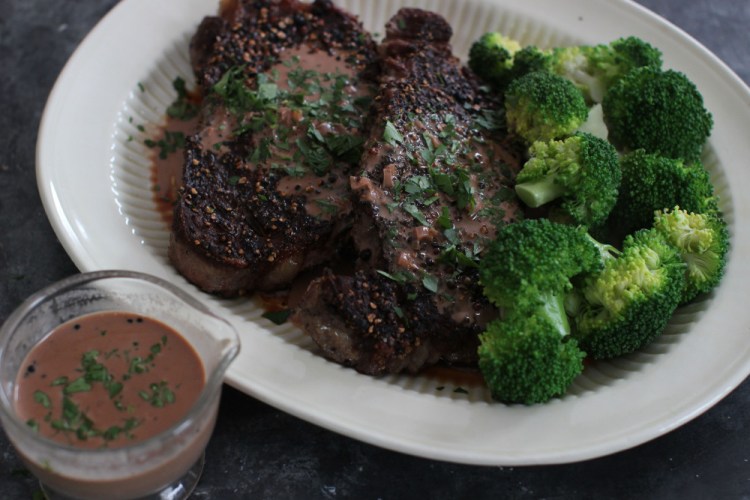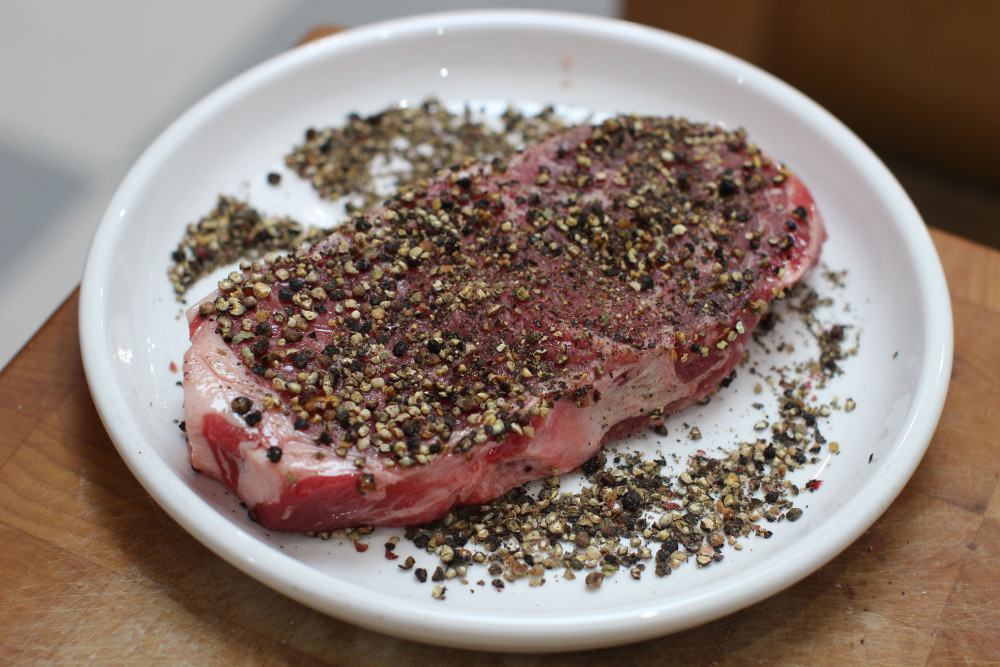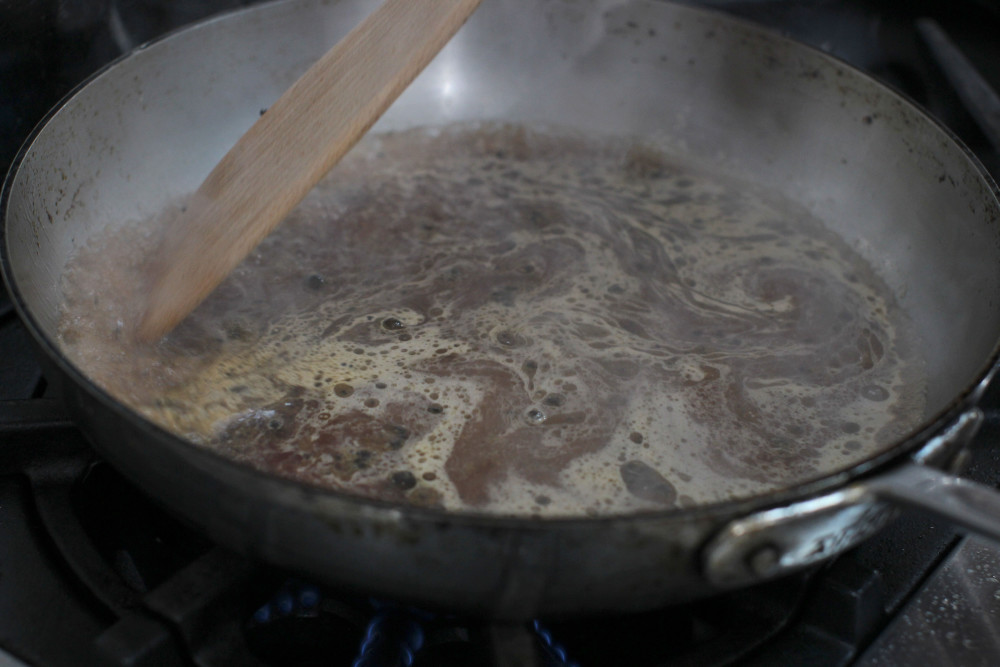One of the main reasons carnivores love meat is because of its depth of flavor. And the easiest way to magnify that flavor is to brown the meat.
For those of you into science, this is called the Maillard reaction, after the French chemist who first described it in 1912. But there’s also another — and equally delicious — reason to brown meat.
As meat browns, it gives off juices that concentrate in the bottom of the pan as little brown bits. Those flavorful brown bits don’t need to be lost. They are easily reconstituted with liquid after the meat has finished browning. And just that quickly you have the base of a deeply tasty sauce.
All of which is to say, if you like big, meaty flavors, you’ll want to master how to make pan sauces. The good news is that it’s easy.
If you’ve never made a pan sauce, this recipe for steak au poivre is a great way to get started. A French classic, steak au poivre is steak that is crusted with cracked peppercorns, then seared and served with a quick pan sauce. Not a fan of peppercorns? Just leave them off; the dish will still be delicious.
The first thing to do when making a pan sauce is to pat the meat dry. Doesn’t matter is you’re cooking beef, lamb, pork or chicken. Grab some paper towels and pat the meat dry. And stick with tender cuts, such as steaks and cutlets. The meat won’t spend a whole lot of time in the pan.
Next, season the meat well with salt and pepper just before putting it in the pan. Then you brown it in fat over medium-high heat until it’s nicely colored and cooked to the doneness you desire. (A meat thermometer is your best friend here.) Remove the meat from the pan, transfer it to a plate, cover it loosely with foil, and let it rest. This ensures the meat’s moistness.
Now you make the pan sauce. If I have some shallots on hand, I’ll chop them and toss them into the pan and brown them for a minute. If not, I’ll pour off most of the fat, then move on to the next step — adding liquid. It can be wine, stock, water, cream or a combo. Whatever you go with, add it and bring it to a boil. As it boils, the key is to scrape up the brown bits stuck to the bottom the pan. This process is known as deglazing the pan.
Once the pan is deglazed, you lower the heat so the sauce just simmers. Next, pour in any juices from the meat that have drained onto the plate where it is resting. Want the sauce to be thicker? Throw in a tablespoon or so of butter, then turn off the heat and swirl around the butter until it’s melted. The recipe below includes cream, which naturally thickens as it cooks down, so I left the butter out.
It’s pretty simple, actually. The pan sauce reaction, in humans, almost invariably takes the form of a huge smile!
STEAK AU POIVRE
Start to finish: 35 minutes
Servings: 4
3 tablespoons whole black peppercorns
Four 3/4-inch-thick beef strip steaks (about 8 ounces each)
2 tablespoons vegetable oil, plus extra
Kosher salt
2 tablespoons minced shallots
1/2 cup red wine
1 cup beef stock
1/2 cup heavy cream
2 teaspoons Dijon mustard
1 tablespoon cognac
Chopped fresh parsley or chives, to garnish
Using a mortar and pestle, coarsely crush the peppercorns. If you don’t have a mortar and pestle, you can use the bottom of a cast-iron skillet to crush them on a cutting board, or place them in a zip-close plastic bag and crush them with a rolling pin. Spread the crushed peppercorns evenly on a plate large enough to accommodate your steaks.
Pat the steaks dry, then brush each with a bit of oil on both sides. One at a time, gently press each steak into the peppercorns to coat both sides. Season the steaks on both sides with salt.
In a large skillet over medium-high, heat the 2 tablespoons of oil. When the oil is hot, reduce the heat to medium, add the steaks and cook for 4 minutes per side for medium-rare. Transfer the steaks to a plate, cover loosely with foil and let rest while making the pan sauce.
Return the skillet to the heat and add the shallots. Cook over medium heat, stirring, for 1 minute. Add the wine, bring to a boil and simmer, scraping up the browned bits from the bottom of the pan, until reduced by three-quarters. Add the stock and cream, bring to a boil, then reduce the heat to a simmer. Simmer until the sauce thickens, about 10 minutes.
Add the juices from the plate of resting meat, then whisk in the mustard and cognac. Season with salt.
Transfer the steaks to serving plates, spoon some of the sauce over each, then garnish with chopped parsley or chives.
Nutrition information per serving: 490 calories; 220 calories from fat (45 percent of total calories); 24 g fat (10 g saturated; 1 g trans fats); 165 mg cholesterol; 8 g carbohydrate; 2 g fiber; 2 g sugar; 55 g protein; 560 mg sodium.
Send questions/comments to the editors.





Comments are no longer available on this story